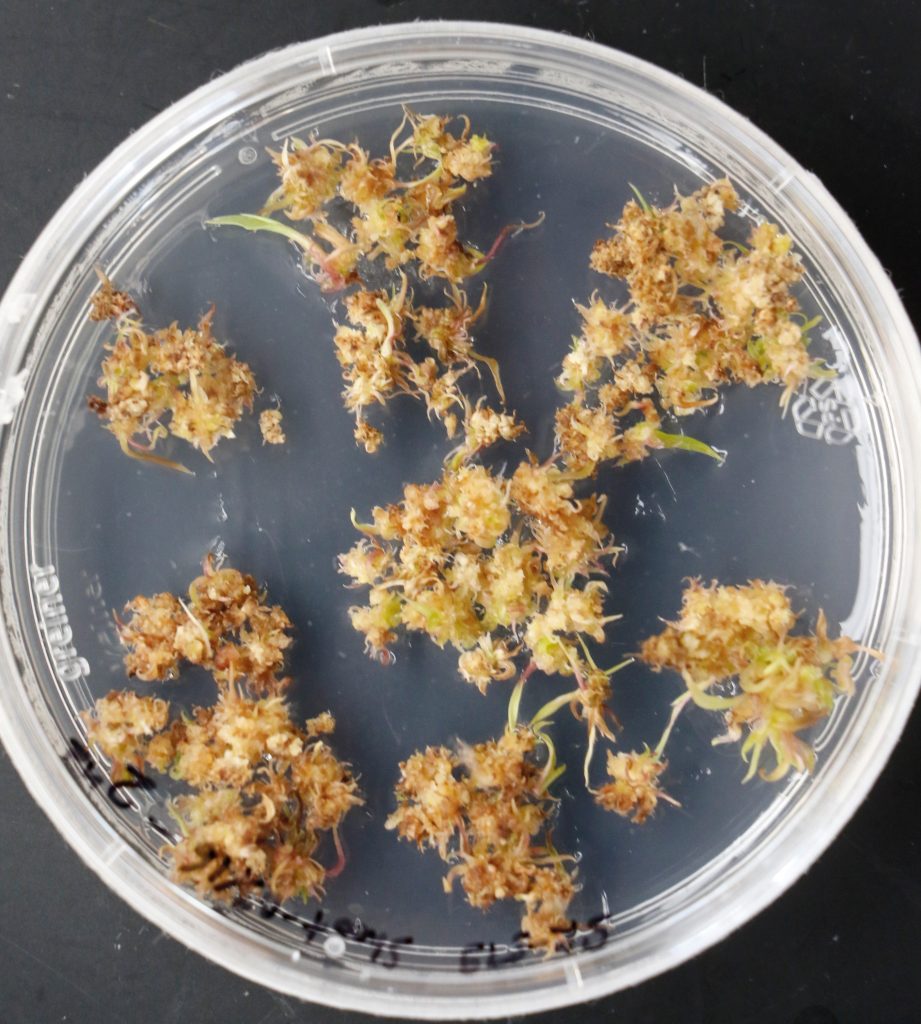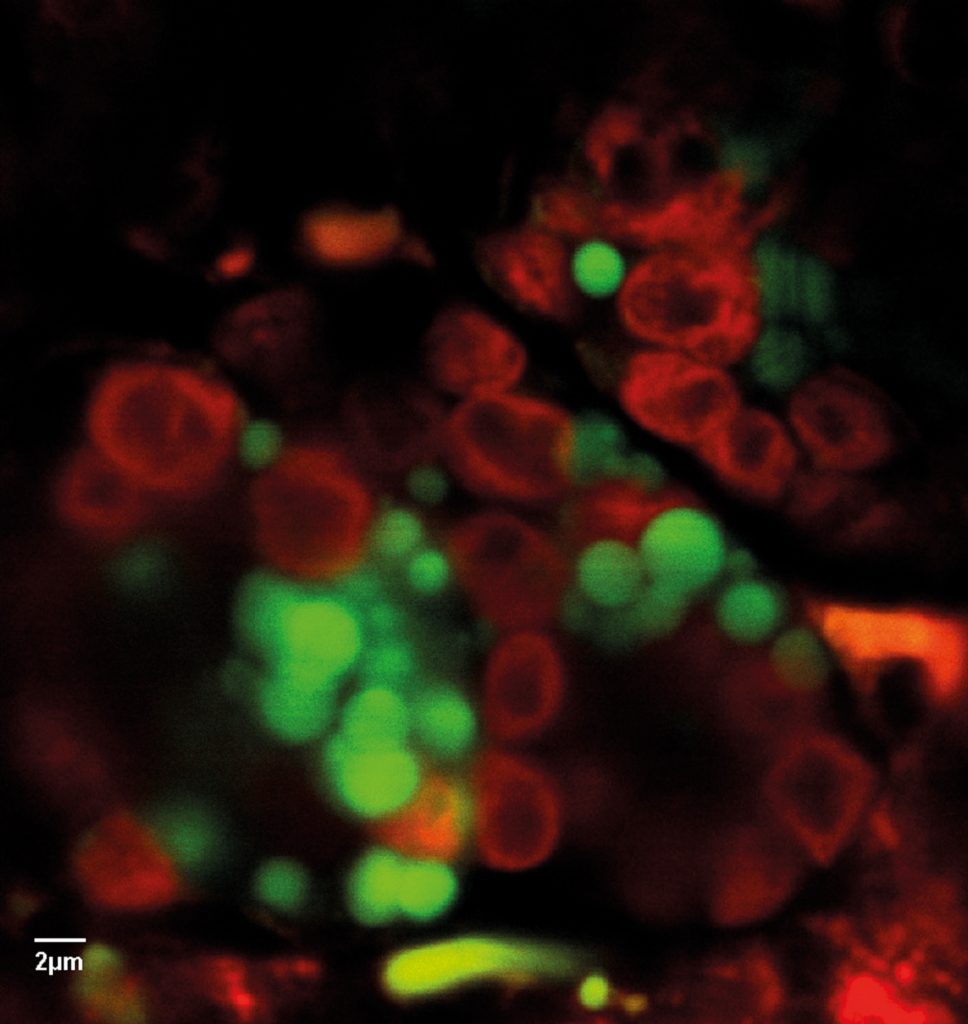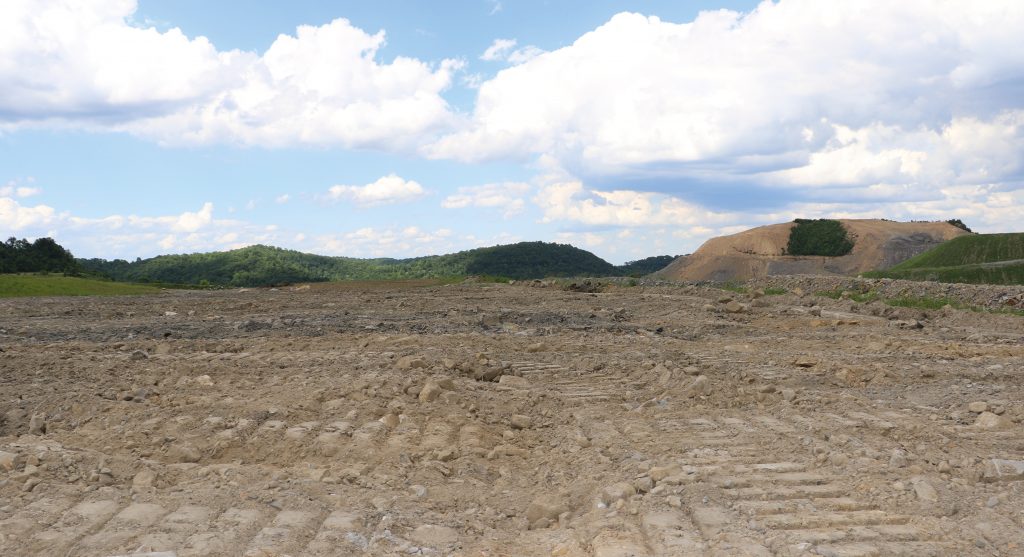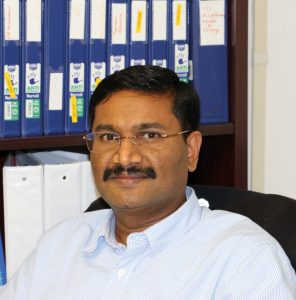Dr Sanju Sanjaya – Gene Technology for Boosting Biodiesel Production
As the human population increases, so does the demand for food and fuel. However, suitable land for growing crops is already severely limited, and there is an urgent need to protect remaining wilderness areas from being converted into cropland. Through a translational research approach, Dr Sanju Sanjaya and his team at the Energy and Environmental Science Institute of West Virginia State University are developing ways to increase the oil content of crops that are able to grow on poor-quality land, such as reclaimed surface coal mines. By increasing the energy provided by plants, the land requirement to grow both biodiesel and food crops could be significantly reduced.
Plant Oils: Fuel, Food and Future
The global human population continues to increase at an unprecedented rate, and is expected to exceed 8.5 billion by the mid-2030s. With population growth comes an increasing demand for food, warmth, shelter, water, and fuel. However, our increasing use of fossil fuels as an energy source is having a devastating impact on Earth’s climate and vulnerable ecosystems.
In nature, plant oils represent one of the most energy-rich sources of renewable hydrocarbons. These oils are stored in the form of triacylglycerols in the seeds, which are used as alternative feedstocks for biodiesel and jet fuel production.
Biodiesel is a promising alternative to traditional fossil fuels, with potential uses for domestic vehicles, aircraft, and as a heating fuel. Although biodiesel emits carbon dioxide when burned, the crops remove carbon dioxide from the atmosphere as they grow, so it is considered a carbon neutral fuel. However, one of the biggest drawbacks to biodiesel production is that the plants used, such as soybean and rapeseed, require the same type of agricultural land to grow as some of our most important food crops. Therefore, one of the greatest challenges we face is to balance the need for increased food production with the rising demand for cleaner fuel sources.
Currently, the majority of the oils used in biodiesel production come from the seeds of the plant. Plants accumulate these oils within the tissue of the seeds to help with the energy-intensive processes of germination and growth of the new seedlings. By harnessing the mechanism used by the plant to send and store these oils within the seeds, Dr Sanju Sanjaya and his team at the Energy and Environmental Science Institute of West Virginia State University aim to create new breeds of energy crops that accumulate higher amounts of oils within the rest of the plant’s vegetative tissue – the leaves, stems and roots, using gene technology.
By creating new crop varieties that sequester oils in all of their tissues, and not solely in the seeds, Dr Sanjaya’s team aims to increase the agricultural efficiency of growing crops for biodiesel production. By doing this, less land will need to be allocated to growing biodiesel crops, leaving more land available for food production. Furthermore, the researchers aim to develop crops that are able to grow on poor-quality soil, such as that found at reclaimed coal mines, where traditional crops would be unable to survive.
Plants that produce higher levels of oils have also been shown to be a good source of nutritional energy and may be important in producing high-quality food crops in the future.

Carbon Partitioning: Starch Versus Oils
Plants capture and convert carbon from the air into energy-rich forms, such as sugars and oils, through the metabolic process of photosynthesis. In mature plants, most of the carbon captured gets routed into the creation of starch, which is subsequently broken down into sugars that can be used by the plant at night, when photosynthesis is not possible. In these plants, the conversion of carbon into oils is reserved predominantly for the seeds of the plant.
Previously, researchers have focused on increasing the amount of oils within plant seeds. But growing plants solely for their seeds is an inefficient process, requiring vast swathes of farmland that could be used for growing food. Some plants do, however, store higher levels of oils within other plant tissues already, such as avocados. The mechanism behind this carbon partitioning is a series of complex metabolic pathways within the plant cells, involving a key transcription factor and multiple enzymes.
Having identified that carbon partitioning to starch or oils is a competing process, Dr Sanjaya and his colleagues aimed to manipulate plant metabolic control systems into preferentially converting some of that carbon into oils within the vegetative tissue. ‘Seed oil-like metabolism in vegetative tissues creates a cellular sink, directly capturing photosynthetic carbon for the production of oil,’ Dr Sanjaya explains.

Increasing Oils with Gene Technology
To increase the amount of oils stored in the vegetative tissue and seeds of plants, Dr Sanjaya and his colleagues have taken a two-pronged approach. Plants are only able to capture a finite amount of carbon in a given period, so increasing the amount of oils created and stored necessarily requires a reduction in the amount of starch being produced.
First, the researchers used advanced molecular techniques to manipulate the genes involved in the production and accumulation of oils – using the model plant Arabidopsis thaliana. This flowering plant species is related to mustard and rapeseed (canola), and is ideal for testing and refining genetic techniques because of its small size and short generation times. Through increasing the activity of (or ‘overexpressing’) a gene controlling seed oil production, Dr Sanjaya’s team was able to create a version of the plant that has the tendency to store these oils within the vegetative tissue.
Following this, Dr Sanjaya and his colleagues focussed on a gene involved in starch production. They found that when this gene was edited to exhibit ‘underexpression’ (decreased activity), more carbon was left available to be routed into the production of oils. The resulting plant that possesses both of the edited genes partitions more of the carbon captured during photosynthesis into oils than into starch.
Upon testing the tissue composition of their new plants, the researchers demonstrated that the vegetative tissue contained considerably higher amounts of oils than plants with only one of the two edited genes. These oils are so abundant that they are visible within the plant tissue as oil droplets. Dr Sanjaya and his colleagues subsequently analysed these droplets, and confirmed that the oil composition was similar to that of seed oils. Additionally, the team found that their new plants exhibit a greater oil-to-starch ratio, demonstrating that carbon is being preferentially partitioned towards the production of oils.
The ability to use the whole plant in the production of biodiesel, instead of just the seeds, greatly increases the efficiency of the system. Producing the same amount of biodiesel from a smaller number of crops also requires less resources (land and water), and results in more land being available to allocate to growing food crops. Additionally, a more efficient system is attractive to farmers, biodiesel producers and jet fuel manufacturers because of the reduction in production costs.
Dr Sanjaya’s group is now translating the basic knowledge gleaned from the model plant to energy crops such as switchgrass and camelina, which are able to grow on reclaimed coal mine land.

Oil-Controlling Genes from Microalgae
Microalgae are aquatic single-celled organisms that, much like plants, capture and store carbon through photosynthesis. The complex processes leading to the storage of oils include multiple organelles within the cell, and multiple enzymes and coenzymes (enzyme helpers) aiding the process.
In order to better understand the metabolic processes behind oil production in biodiesel crops, Dr Sanjaya has been exploring carbon partitioning in microalgae. ‘In both organism groups, the basic enzymatic mechanisms involved are similar,’ he says. This similarity offers opportunities to identify additional genes from microalgae that could be useful in creating further plant varieties that preferentially store oils over starch.
Dr Sanjaya and his colleagues have identified five enzymes involved in carbon partitioning within microalgae that can be considered ‘generalists’ in the process – acting on multiple types of precursor substances to create unique quality oils. By identifying the genes behind these enzymes, they were able to edit the genes within Arabidopsis thaliana to produce the same enzymes. The team discovered that one of these enzymes was particularly effective at producing a plant breed that stores large amounts of oils similar to Omega-3 fatty acids within their leaves.
In addition to allowing the whole plant to be used in biodiesel production, Dr Sanjaya and his colleagues also demonstrated the enhanced energy value of these plants as a food or animal feed source. In experiments, the team found that moth caterpillars feeding on plants that stored more oils ate the same amount as those feeding on wild type plants, but gained more weight. As the human population increases, producing food crops that have a higher energy and nutritional value than traditional crops may become increasingly important.

The Future for Increased Oil Varieties
Dr Sanjaya’s basic and translational research is a vital step towards circumventing problems in producing enough food and fuel, especially with predicted future levels of population growth. His team has demonstrated that altering carbon partitioning in favour of oils over starches can produce plant varieties that improve the efficiency of biodiesel production and increase the nutritional value of food crops.
Dr Sanjaya and his team continue to investigate the mechanisms involved in oil accumulation in plants and microalgae, with the aim of improving the altered plant varieties further and identifying the other genes involved in this process. A key step in the future of this research is moving from the use of model plant species to the use of crop plant species. A better understanding of the processes behind oil production and storage will increase the likelihood of this technology being successful in a wider range of plant species.
Reference
https://doi.org/10.33548/SCIENTIA408
Meet the researcher

Dr Sanju A. Sanjaya
Assistant Professor and Director
Energy and Environmental Science Institute
West Virginia State University
Institute, WV
USA
Dr Sanju Sanjaya earned his PhD in Applied Botany from the University of Mysore, before continuing his research into bioenergy and biotechnology at various prestigious institutions across the globe. Dr Sanjaya is currently Assistant Professor and Director at the Energy and Environmental Science Institute of West Virginia State University. Here, he leads an active research group that aims to enhance the bioenergy, nutritional value, industrial compounds and phytoremediation of plants using genetic, molecular and genome editing techniques. His team’s basic and translational research is vital to increasing the sustainability and production of these plants. For his outstanding research in plant biotechnology, Dr Sanjaya has received several USDA, NSF, DOE and DOD funded grants. He has also been granted patents for his work, and has shared his research findings through publications in numerous influential journals. Dr Sanjaya advises a number of graduate and undergraduate students, and teaches graduate and undergraduate courses, including plant biotechnology.
CONTACT
W: http://www.wvstateu.edu/Faculty/Dr-Sanjaya-(1).aspx
KEY COLLABORATORS
Bagyalakshmi Muthan, West Virginia State University
Dr Christoph Benning, Michigan State University
Dr Edgar Cahoon, University of Nebraska-Lincoln
Dr Timothy Durrett, Kansas State University
Dr Dylan Kosma, University of Nevada
Dr Abraham Koo, University of Missouri
Dr Changcheng Xu, Brookhaven National Laboratory
Dr Christian Tobias, USDA-ARS
FUNDING
USDA NIFA CBG
USDA NIFA Evans-Allen
DOD Instrumentation
NSF RIA
DOE NETL
WVSU PEER
NASA REA
FURTHER READING
C Benning, S Sanjaya, Genetically Engineered Plants with Increased Vegetative Oil Content, 2019, Patent Number US 10,280,432.
C Benning, S Sanjaya, J Sedbrook, X Changcheng, Production of Oil in Vegetative Tissues, 2018, Patent Number US 100060039.
S Sanjaya, Power Plants, WV Journal of Science and Research, spring 2017, 1–3.
Y Yang, J Munz, C Cass, S Sanjaya, J Sedbrook, J Ohlrogge, C Benning, Ectopic expression of WRI1 affects fatty acid homeostasis in Brachypodium distachyon vegetative tissues, Plant Physiology, 2015, 169, 1836–1847.
SA Sanjaya, R Miller, TP Durrett, DK Kosma, TA Lydic, B Muthan, AJK Koo, YV Bukhman, GE Reid, GA Howe, J Ohlrogge, C Benning, Altered Lipid Composition and Enhanced Nutritional Value of Arabidopsis Leaves following Introduction of an Algal Diacylglycerol Acyltransferase 2, The Plant Cell, 2013, 25, 677–693.
SA Sanjaya, TP Durrett, SE Weise, C Benning, Increasing the energy density of vegetative tissues by diverting carbon from starch to oil biosynthesis in transgenic Arabidopsis, Plant Biotechnology Journal, 2011, 9, 874–883.

Creative Commons Licence
(CC BY 4.0)
This work is licensed under a Creative Commons Attribution 4.0 International License. 
What does this mean?
Share: You can copy and redistribute the material in any medium or format
Adapt: You can change, and build upon the material for any purpose, even commercially.
Credit: You must give appropriate credit, provide a link to the license, and indicate if changes were made.
More articles you may like
Grandmothers: Innovation Through Tradition
Grandmother Project – Change through Culture (GMP) is an organisation dedicated to documenting the role of grandmothers and demonstrating the effectiveness of grandmother-inclusive strategies in improving the health and well-being of women, children, and adolescents. GMP’s groundbreaking work challenges conventional wisdom to transform community-based interventions in Africa and beyond, harnessing a powerful but often overlooked resource: the wisdom and influence of grandmothers.
Dr Robert Larkin | Cultivating Change to Improve Soil Health and Increase Potato Yield
Environmental quality and food production are facing the pressing challenges of climate change and global population growth. Dr Robert Larkin from the United States Department of Agriculture-Agricultural Research Service (USDA-ARS) and a team of plant scientists developed and tested a range of crop management systems to help overcome these compounding challenges. Their work is improving soil health and increasing the yield of potato crops, contributing to the future food security of nations.
Professor Giorgio Buttazzo | Artificial Intelligence and a Crossroads for Humanity
Where do we stand with artificial intelligence? Might machines take over our jobs? Can machines become conscious? Might we be harmed by robots? What is the future of humanity? Professor Giorgio Buttazzo of Scuola Superiore Sant’Anna is an expert in artificial intelligence and neural networks. In a recent publication, he provides considered insights into some of the most pressing questions surrounding artificial intelligence and humanity.
Dr Ralf Adam | New Technologies Shaping the Future of Oral Hygiene
Understanding the efficiency of various toothbrush technologies is essential for achieving optimal oral health. Dr Ralf Adam, who leads a dedicated team at Procter & Gamble in Germany, is keen to investigate the complexities of these technologies. His team have provided new insights into the best toothbrush types for plaque removal and the maintenance of gum health. By highlighting the importance of informed oral care decisions and ongoing investigations, this vital research works towards ensuring everyone can achieve a brighter, healthier smile.




